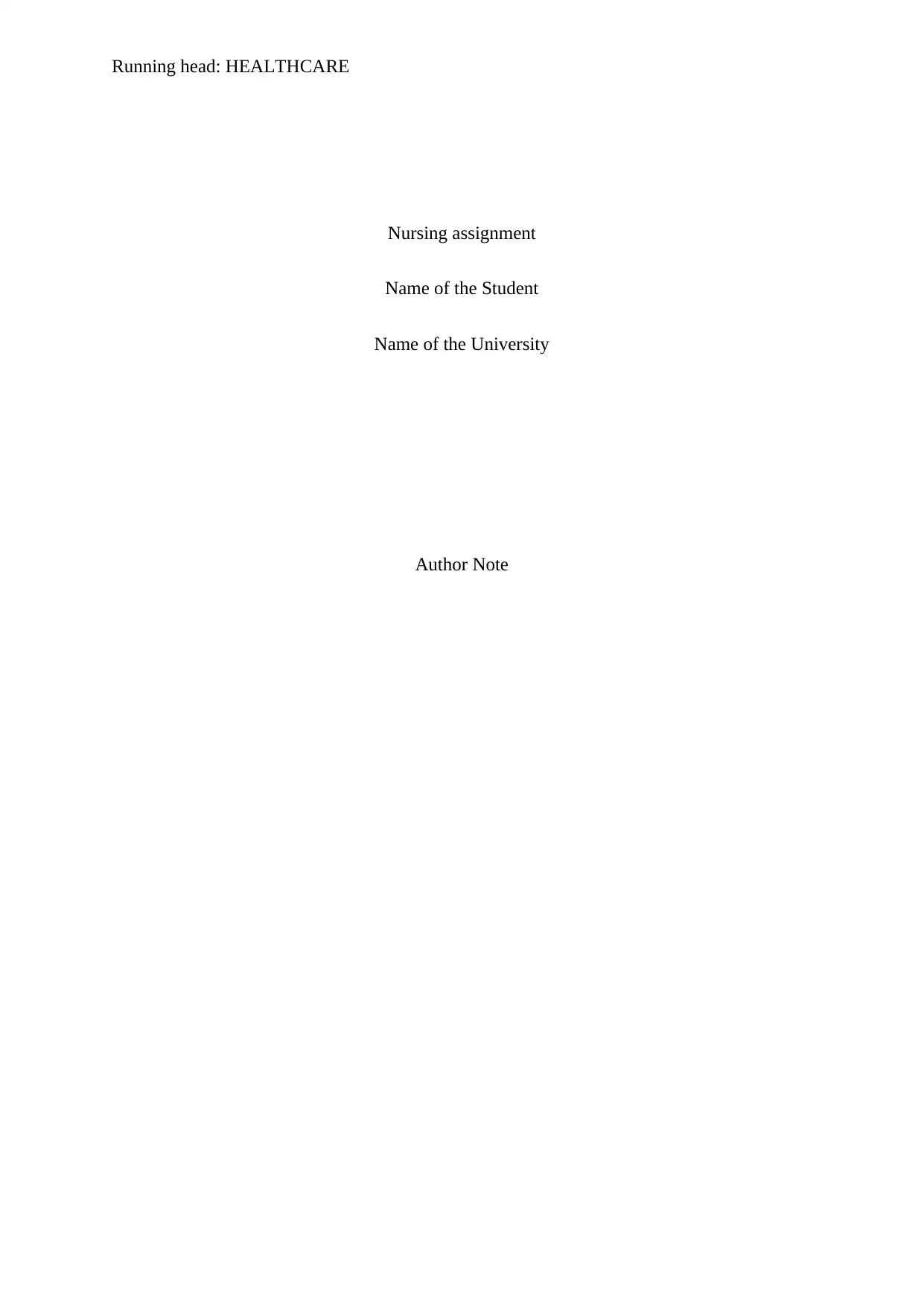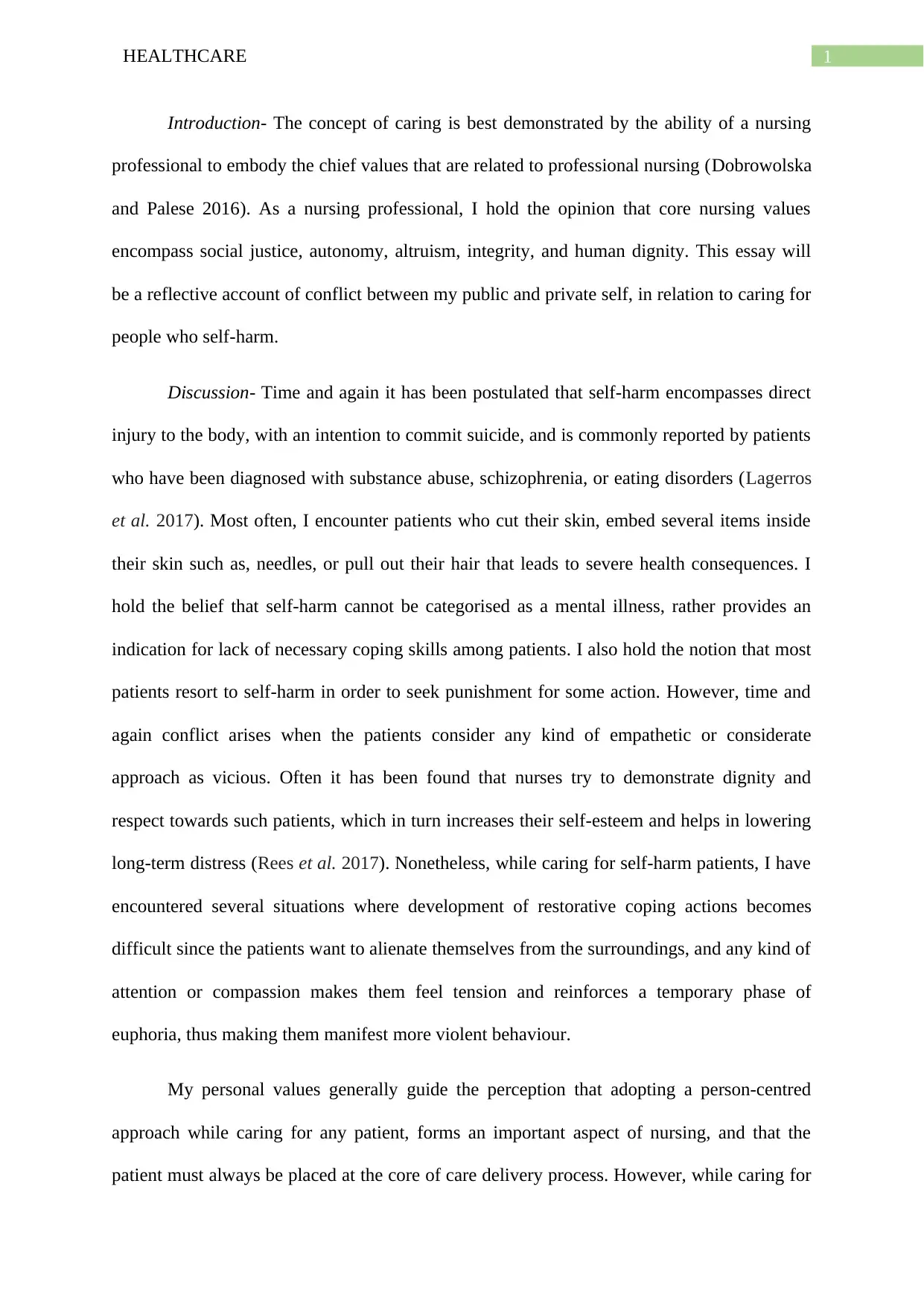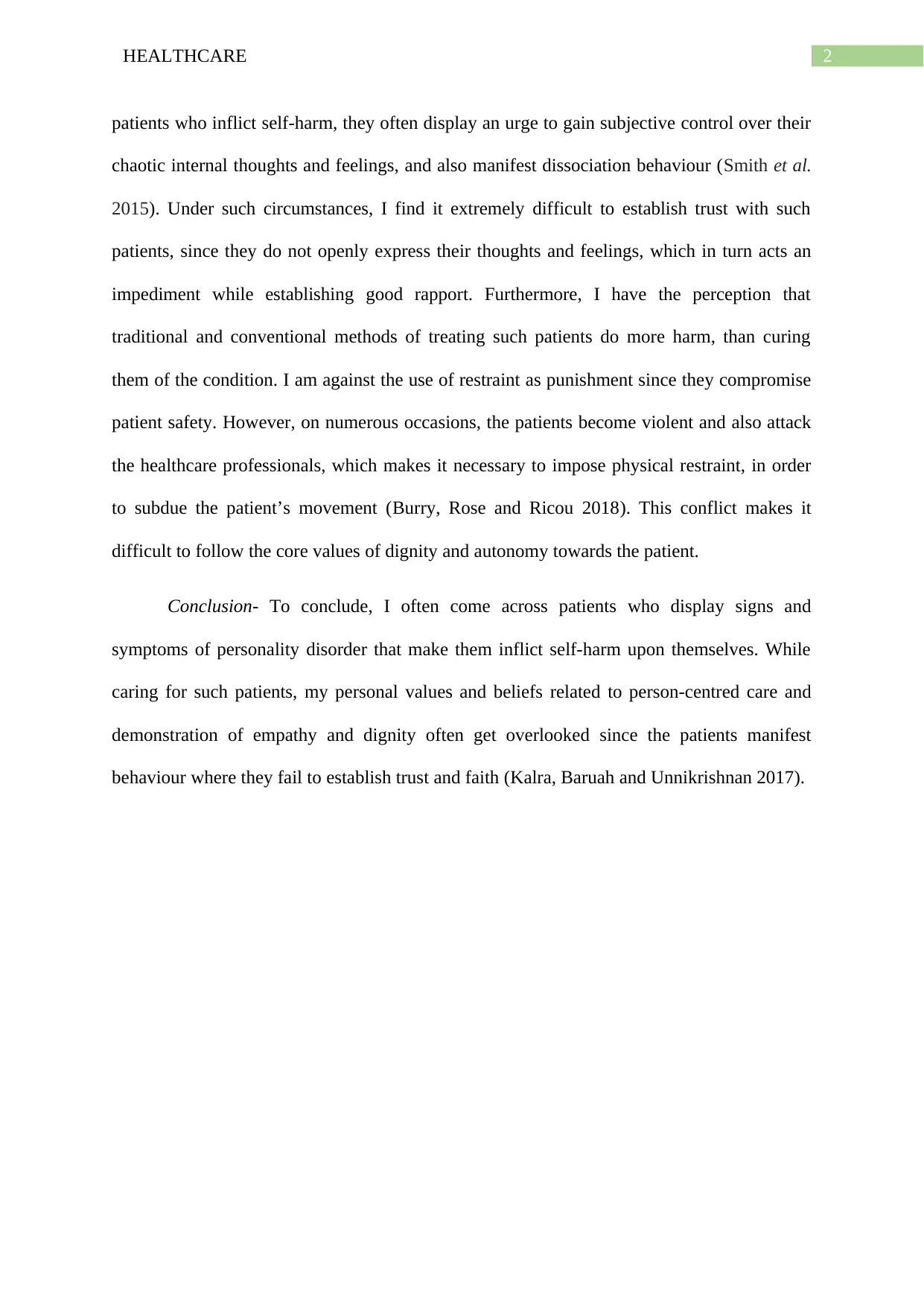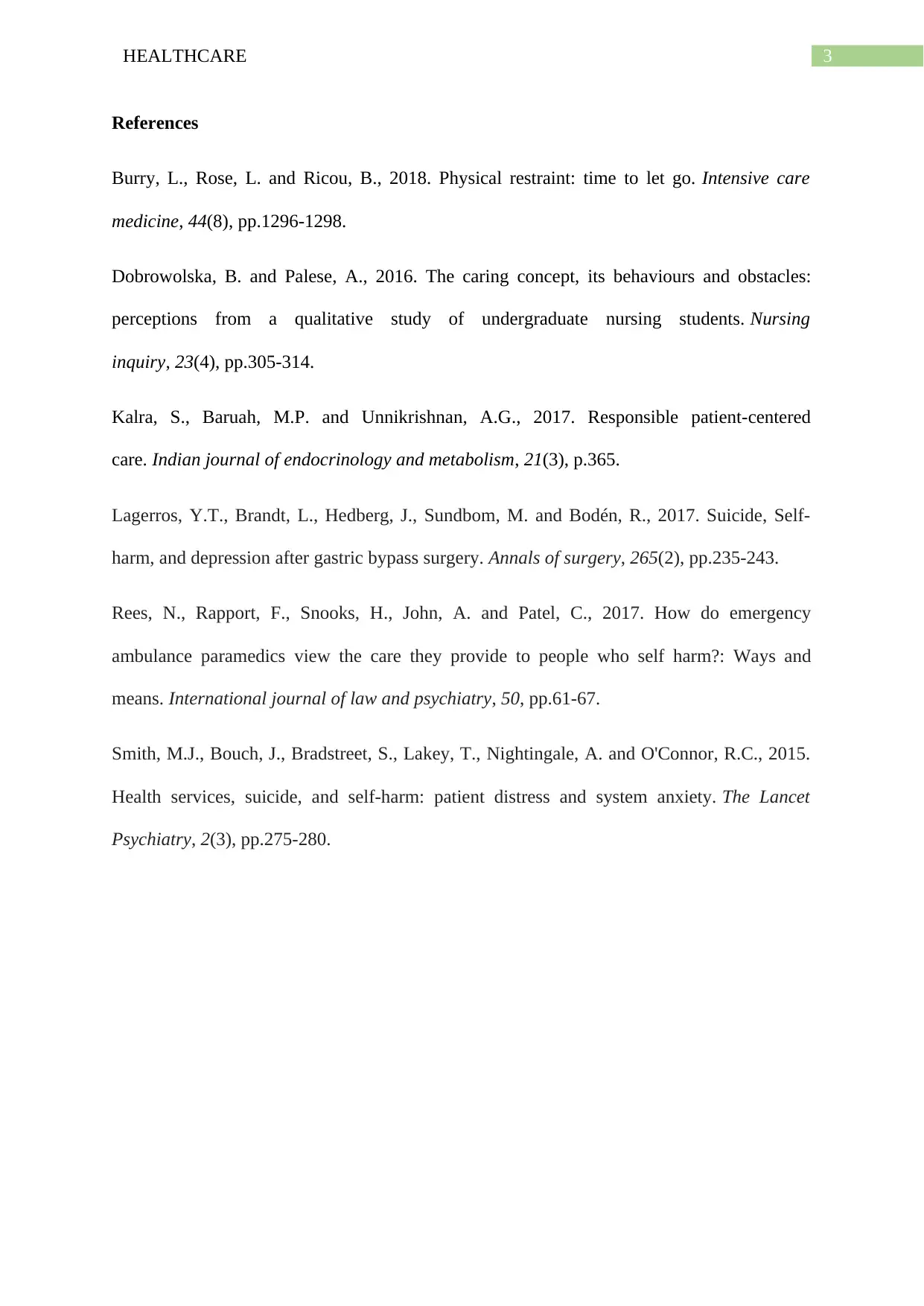University Nursing Assignment: Healthcare Conflict Essay
VerifiedAdded on 2022/10/10
|4
|903
|248
Essay
AI Summary
This essay provides a reflective account of a nursing professional's experience dealing with the conflict between their public and private self, specifically in relation to caring for patients who self-harm. The author, a nursing student, discusses the core nursing values of social justice, autonomy, altruism, integrity, and human dignity, and how these values are challenged when caring for patients who engage in self-harm. The essay highlights the difficulties in establishing trust, the conflict with traditional treatment methods, and the challenges in upholding patient dignity and autonomy when dealing with violent or uncooperative patients. The author reflects on their personal values, their perceptions of the patients' behaviors, and the impact of these factors on their ability to provide person-centered care. The essay concludes by emphasizing the need to balance personal beliefs with professional ethics while caring for patients with personality disorders who engage in self-harm.
1 out of 4











![[object Object]](/_next/static/media/star-bottom.7253800d.svg)